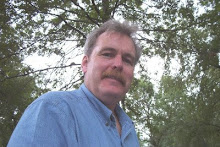"I drink it when I'm happy and when I'm sad. Sometimes, I drink it when I'm alone. When I have company I consider it obligatory. I trifle with it if I'm not hungry and drink it if I am; otherwise I never touch it - unless I'm thirsty."
Madame Bollinger, one of the "grande dames" of French champagne (1884 - 1977).
There is a region in France called La Champagne. It is a region of timeless natural beauty. The name derives from the Latin ‘campus’, ‘campania’ or field. In Old French this became ‘Champaign’; today, Champagne. The French will tell you that it is where all champagne is from. The region and the wine have a storied history.
Pliny (the Elder) documented viticulture in the Marne as early as 79 A.D. As well as developing vineyards and wine making, the Romans also quarried the chalky hillsides to remove chalk blocks for building. The chalk pits have since become cellars for millions of bottles of Champagne. Then, in 92 A.D. the Roman Emperor Domitian decreed that most of the vineyards of France should be uprooted to eliminate competition with the wines of the Italian peninsula. For two centuries the vineyards were cultivated in secret, until the Emperor Probus rescinded the decree. From the very outset, the wines of Champagne were prized above all the vineyards of Europe.
As the influence of the church spread, considerable vineyards were given to monastic orders. When Crusaders who had entrusted their property to the church did not return, these holdings increased significantly. The most coveted vineyards had wines that were considered to be the only ones worthy of offering to God. For centuries they were the wines used for the sacrament, for coronations, for the royal table and for the consecration of treaties.
The still wines of Champagne were rivaled only by those of Burgundy, the other proponent of the Pinot Noir grape. When the Champenois perceived opportunities to widen their markets, no expense was spared to improve the quality of the wine. A paper-and-ink war, in Latin, ensued between Champagne and Burgundy. Then the Champenois discovered how to vinify light-colored wines from the Pinot Noir grape. By lightly crushing the red grape and minimizing the time that the skins were in contact with the juice, they made white wine from red grapes!
In the early 1660’s, A M. de Saint-Evremond, a courtier that had fallen from the king’s favor, fled to London and established himself as an arbiter of fashion. He introduced the wines of Champagne, which became instantly popular. It is from this period that the first accounts of sparkling Champagne wines are found. These early sparkling wines were the result of an accident. When shipped abroad in cask, the warm spring weather frequently set off a secondary fermentation, still underway when the wines arrived. These delicate new wines were bottled with a cork stopper immediately upon their arrival. They retained, in more or less haphazard fashion, a lively sparkle.
Successful, deliberate methods of capturing the bubbles in the bottle were due to the combined efforts of the monastic orders of Pierry and Epernay. Under the inspired direction of Frère Jean Oudart and Dom Pierre Pérignon , the abbeys of Saint-Pierre aux Monts de Châlons and Saint-Pierre d’Hautvillers became the birthplace of naturally sparkling wine. The two abbeys were barely two miles apart and it is likely that these two consulted. The technique of blending from various vineyards to obtain a finished wine superior to any of its parts, the process of clarifying sediment from the wine, and the introduction of the cork to replace hemp-wrapped wooden stoppers are principles that remain important in the production of Champagne.
For nearly a century and a half after the presence or absence of bubbles in wine was erratic. There was a problem of exploding bottles. A loss of fifteen or twenty per cent was normal, and forty per cent not unusual. Due to the Northerly position of Champagne the vines often lacked enough sunshine. It was the practice to add sugar to the finished wine to smooth the edge, as well as to suit the public taste for sweet wines. Jean-Antoine Chaptal added sugar at fermentation, rather than to the finished wine, to increase alcohol content. Then Parmentier had vastly superior results by adding sugar made from concentrated grape juice to the must. These developments only worsened the problem of exploding bottles. Uncontrolled quantities of fermenting sugar raised the ratio of bursting bottles to as high as eighty percent! Then a pharmacist described a method for measuring the residual sugar in wine. It was already known that riper, sweeter grapes produced higher levels of alcohol and carbon dioxide in wine; but the new method made it possible to determine exactly how much additional sugar was needed to produce a specific volume of carbon dioxide in the wine.. For the first time, making Champagne could be accomplished with a degree of reliability.
That’s a lot of history for you to mix it with orange juice for that Sunday morning mimosa!
Wednesday, April 4, 2012
Subscribe to:
Post Comments (Atom)

No comments:
Post a Comment